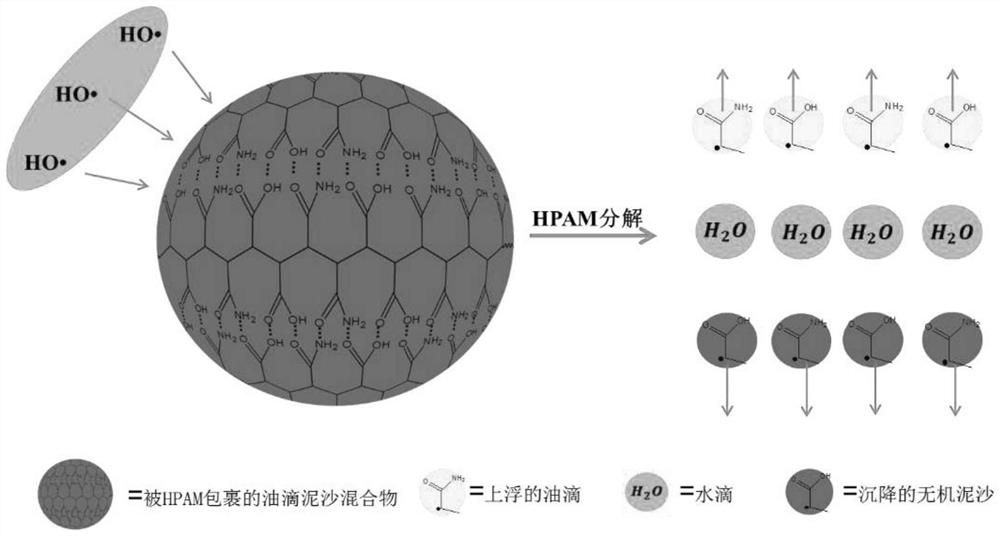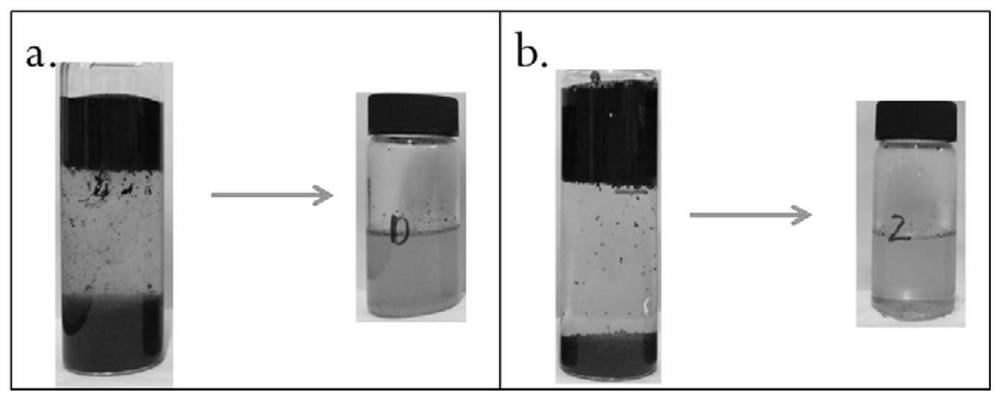A method for separating oil and mud from oily sludge
A kind of technology of poly-oil sludge and system, which is applied in the direction of oxidation treatment sludge, mining wastewater treatment, etc., can solve the problems of poly-oil-containing sludge, polymer residue, and inclusion pollutants, etc., achieve low oil content and simplify subsequent steps.
- Summary
- Abstract
- Description
- Claims
- Application Information
AI Technical Summary
Problems solved by technology
Method used
Image
Examples
Embodiment 1
[0040] 24mL of thiourea / hydrogen peroxide (mass percentage ratio = 1:1) with a concentration of 1% in mass percentage was reacted with 8g of oily sludge (45°C, 800rpm), stirred for 15min, kept at a constant temperature of 45°C for 15min, and used 10mL Take out the water phase with a syringe and place it in a glass bottle, measure the water phase taken out three times with an oil meter and take the average value to obtain the oil content, which is 20836 mg / L.
Embodiment 2
[0042] 24mL of 3% thiourea / hydrogen peroxide (mass percentage ratio = 1:1) reacted with 8g of oily sludge (45°C, 800rpm), stirred for 15min, kept at a constant temperature of 45°C for 15min, and used 10mL Take out the water phase with a syringe and place it in a glass bottle, measure the water phase taken out three times with an oil meter and take the average value to obtain the oil content, which is 18768mg / L.
Embodiment 3
[0044] 24mL thiourea / hydrogen peroxide (mass percentage ratio = 1:1) with 4% concentration by mass percent was reacted with 8g oily sludge (45°C, 800rpm), stirred for 15min, kept at a constant temperature of 45°C for 15min, and used 10mL Take out the water phase with a syringe and place it in a glass bottle, measure the water phase taken out three times with an oil meter and take the average value to obtain the oil content, which is 28804 mg / L.
PUM
 Login to View More
Login to View More Abstract
Description
Claims
Application Information
 Login to View More
Login to View More - R&D Engineer
- R&D Manager
- IP Professional
- Industry Leading Data Capabilities
- Powerful AI technology
- Patent DNA Extraction
Browse by: Latest US Patents, China's latest patents, Technical Efficacy Thesaurus, Application Domain, Technology Topic, Popular Technical Reports.
© 2024 PatSnap. All rights reserved.Legal|Privacy policy|Modern Slavery Act Transparency Statement|Sitemap|About US| Contact US: help@patsnap.com









